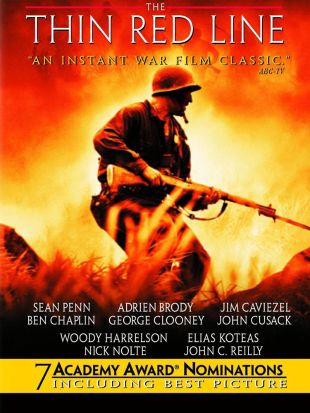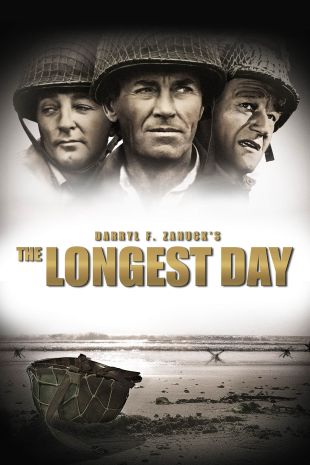One of the most influential novelists of the mid-20th century to deal with the subject of war, James Jones was something of a fixture in Hollywood as a source of great books. James Ramon Jones was born in Robinson, IL, in 1921, the son of Ramon Jones, a dentist, and the former Ada Blessing. The stock market crash in October 1929 destroyed the family's finances, and Ramon later sank into alcoholism, while Ada was crippled by diabetes. Seeing limited prospects in front of him and eager to separate himself from his family, James enlisted in the U.S. Army in June 1939 and was stationed in New York, Puerto Rico, the Canal Zone, and California, before he was transferred to the Army Air Corps in Hawaii.
Jones was present when Pearl Harbor was attacked and served in the defense of Hawaii; while awaiting reassignment to a combat area, he took some literature and writing courses at the University of Hawaii. In late 1942, he was shipped out for the Solomon Islands, and, in January 1943, participated in fighting on Guadalcanal. Jones's army record was marred by his going AWOL in late 1943 after he was denied leave and his request for a limited duty assignment was ignored. In the late winter of 1944, he was suddenly promoted to sergeant, though by then was manifesting enough mental problems that he was sent to a psychiatric unit for observation. In the summer of that year, after being diagnosed with a psychoneurotic disorder, he was honorably discharged. Jones later moved to New York (briefly attending New York University) and then to North Carolina before returning to live with the Handys in Robinson, IL, where he spent five years working on the book that became From Here to Eternity, receiving encouragement from two Scribners editors, Maxwell Perkins and Burroughs Mitchell. Meanwhile, Jones published his first short story, Temper of Steel, in Atlantic Monthly during 1948.
From Here to Eternity was finished in 1950 and published in 1951. The film rights were immediately bought for 87,000 dollars by Columbia Pictures, whose president, Harry Cohn, vowed to turn the 850-page book into a major movie, despite having to overcome such hurdles as a narrative that freely mentioned homosexuality, whorehouses, marital infidelity, and as much brutality as had ever been offered to the filmgoing public. A huge amount of Jones's experiences seemed bound up within the narrative, which was an uncompromising love/hate account of the army. The screenplay by Daniel Taradash kept the spirit of the book intact and the resulting film by Fred Zinnemann (starring Burt Lancaster, Deborah Kerr, Montgomery Clift, Frank Sinatra, and Donna Reed) was one the most honored and prestigious (and successful) ever issued by Columbia, winning eight Academy Awards, including Best Picture. It quickly took on a life of its own in popular culture, with the romantic tryst in the surf on the beach between Lancaster's Milt Warden and Kerr's Karen Holmes becoming one of the most suggestive and widely known (and parodied) love scenes of the decade. Sinatra's performance as Maggio rescued his acting career from oblivion, while Clift's cemented his reputation as one of the finest actors of his generation.
Over the remainder of the 1950s, Jones split with Lowney Handy (with whom he had run a writer's retreat) in an acrimonious break-up and, with help from novelist Budd Schulberg, met and married actress Gloria Patricia Mosolino. Jones also finished and published his second novel, Some Came Running, the story of a returning ex-soldier who finds himself alienated from the pettiness and prejudices of his hometown. Although it was far longer than From Here to Eternity and got decidedly mixed reviews because of its length, the book became a bestseller and earned Jones 250,000 dollars for the film rights. Vincente Minnelli turned it into a very good movie starring Frank Sinatra, Shirley MacLaine, and Dean Martin. By the end of the '50s, Jones had moved to Paris (where he lived until 1974) with his wife and started a family. He published the short novel The Pistol in 1959 and later served as a consultant on Darryl F. Zanuck's production of The Longest Day. In 1962, Jones published his war novel The Thin Red Line, the follow-up to From Here to Eternity in what eventually became a World War II trilogy. Set amid the fighting on Guadalcanal, the story was filmed for the first time in 1964 by director Andrew Marton under auspices of Philip Yordan's Security Pictures, with Jack Warden (who had also been in From Here to Eternity) playing the role of Milt Warden and Keir Dullea as a sensitive recruit in his company. His next novel, Go to the Widow-Maker (1967), dealt with a favorite Jones hobby, skin diving, and male perceptions of sexual prowess. The one after that, The Merry Month of May, dealt with the student uprising in Paris in 1968 from the standpoint of expatriate American students. He also published a collection of short stories dealing with war and small-town life under the title The Ice-Cream Headache and Other Stories.
By this time, Jones occupied the front rank of popular American authors, with peers including Schulberg, Herman Wouk, and Irwin Shaw. From Here to Eternity remained a favorite among serious high school students and was studied in literature classes; Some Came Running and The Thin Red Line weren't far behind, though their film adaptations were less well-known. During the 1970s, however, he lost focus on his fiction. He moved his family back to the United States, which he found completely transformed from the country he'd known in the '50s. Some of these reactions were reflected in his mystery novel A Touch of Danger (1973), in which a 50-ish American private investigator takes a case that plunges him into murder, the drug trade, and hippies. He also became a war correspondent for The New York Times Magazine in Vietnam. His writing, embodied in Viet Journal (1974), reflected a bitter hatred of the war, the corruption of the South Vietnamese government, the savagery of the Vietcong and North Vietnamese Army regulars, and admiration for the American soldiers. Living on Long Island, he wrote the text for a war art book called WWII: A Chronicle of Soldiering (1975). Jones'ss health began to fail around this time, just as he was finishing his last war novel, Whistle. The writer was forced to dictate the last chapters that he finished, and the final four were completed from his notes and unedited writing by a longtime friend, Willie Morris. Published posthumously in 1978, it became a bestseller in hardcover as the final part of an epic story of World War II and the men who fought in it, drawing in two generations of readers who had known From Here to Eternity and The Thin Red Line.
In 1979, two years after Jones'ss death, a miniseries was made of From Here to Eternity. Directed by Buzz Kulik and starring William Devane, Natalie Wood, and Steve Railsback, it was sufficiently popular to generate a short-lived TV series. (There had also been an overt rip-off of the book entitled Pearl in 1978 starring Robert Wagner, Dennis Weaver, and Angie Dickinson on a rival network.) In 1998, The Thin Red Line was adapted to the big screen once again, this time by director Terrence Malick and starring Sean Penn in a star-studded, epic, 170-minute version. The release of that movie resulted in a new lease on life for the original novel, just as Zinnemann's From Here to Eternity periodically led viewers back to its source over the decades. The latter film had endured so well that it rated a 50th anniversary theatrical re-release in late 2003.


